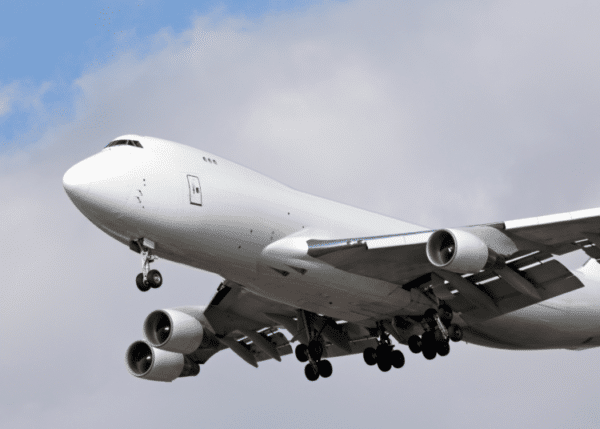July Air Cargo Traffic Shows 5.5% Growth Year-over-Year
This July brought a breath of fresh air to the global air cargo scene with traffic increasing by nearly 6%, signaling a proactive move by shippers and carriers alike. This growth was largely fueled by forward-loading strategies ahead of the anticipated changes in U.S. trade policies, specifically the ending of de minimis exemptions and reciprocal tariffs enforcement. Such strategic timing has driven cargo tonne kilometers (CTK) up 5.5% year over year, with international lanes enjoying a 6% lift.
The Regional Picture: Asia-Pacific Rises While North America Slips
The Asia-Pacific region stood out as a powerhouse, showing notable gains in air cargo traffic this July. This surge reflects strong economic activities and export-import dynamics in the region, positioning it as a key driver in global freight movement. Conversely, North America experienced a contraction for the third consecutive month, hinting at a cooling demand or strategic supply chain adaptations in response to regulatory adjustments and market conditions.
Table: Air Cargo Traffic Growth Comparison by Region (Year-over-Year July)
| Região | Percentage Change in CTK | Tendência |
|---|---|---|
| Ásia-Pacífico | Up around 6% | Growth |
| América do Norte | Declined (third month running) | Recusar |
| International Lanes Overall | +6% | Growth |
Capacity and Demand: Navigating Through Shifting Bounds
While the demand in July rose reasonably, the capacity situation is a bit of a mixed bag—as is often the case in freight forwarding. Airlines and logistics providers are constantly juggling between maximizing cargo space and maintaining operational efficiency against the backdrop of evolving market demands. It’s a classic supply and demand dance, where getting the steps right means smoother delivery chains and lower freight costs.
Implications for Logistics and Global Freight Movement
This pattern of frontloading shipments ahead of regulatory shifts underscores an adaptive mindset among shippers, who are keen to avoid potential disruptions. For logistics professionals, it translates into a need for heightened agility and flexibility in planning movements, including air freight and multimodal transport. Timely cargo delivery and freight management become even more critical when navigating tariff changes and capacity challenges.
List: Key Logistics Considerations Arising from July Cargo Trends
- Forecasting Demand: Anticipate shipment surges linked to policy changes.
- Gestão da capacidade: Adjust freight capacity to meet sudden shifts.
- Otimização de rotas: Evaluate alternatives as regional demand fluctuates.
- Controlo de Custos: Manage rates amidst cargo capacity pressure.
- Customer Communication: Keep clients informed on shipment status and possible delays.
Industry Moves: New Deals and Symposiums
July also saw notable developments in the industry, with figures like UPS’s Mills joining upcoming cargo symposiums, highlighting the ongoing focus on freight innovations. Meanwhile, Copa Airlines inked a deal for their first 737-800BCF aircraft with Icelease, signaling fleet updates aligned with growing cargo demand. These movements underscore an industry actively gearing up for evolving global logistics demands.
Why Real Experience Beats All the Reviews
Air cargo traffic statistics and expert analyses provide a solid framework to understand industry shifts. However, nothing trumps gaining firsthand experience in managing shipments through these changing dynamics. Platforms like GetTransport.com offer users the chance to directly engage with logistics options globally—facilitating cargo deliveries, large item moves, vehicle transportation, and more at competitive rates. The platform’s extensive network and transparent pricing empower users to make informed, practical choices—steering clear of surprises while optimizing their freight dispatch.
GetTransport.com’s versatility reveals how critical it is to have a logistics partner who flexibly meets diverse transport needs while navigating the ebbs and flows of global shipping trends. Reserve a sua viagem em GetTransport.com for efficient, worldwide cargo movement solutions.
Looking Ahead: What the July Cargo Spike Means for Logistics
While the recent air cargo growth may appear modest on the global scale, the pattern of frontloading and regional divergences carries valuable signals for freight movers. It hints at a logistics landscape that must remain nimble, anticipating policy shifts and balancing capacity with demand. Whether it’s international shipping, container dispatch, or bulky goods haulage, understanding these flow changes will be vital to avoiding bottlenecks and ensuring continuity.
For modern logistics specialists and cargo movers, staying current on such trends is a must. GetTransport.com remains committed to keeping pace with these developments, ensuring the best network options and pricing structures. Start planning your next delivery and secure your freight transport with GetTransport.com—where convenience meets reliability on the global stage.
Resumo
July’s near 6% increase in air cargo traffic, driven by strategic shipment movements ahead of U.S. tariff changes, highlights key regional differences—with Asia-Pacific showing strength and North America experiencing setbacks. Operational capacity and demand shifts call for adaptable logistics planning across freight, distribution, and shipping sectors. Industry advances, including new aircraft deals and symposium participation, further underscore the dynamic nature of air cargo handling.
For anyone navigating these waters, the real insight lies in a practical, hands-on grasp of shipping trends combined with access to reliable and affordable transportation options. GetTransport.com fits right into this picture by providing efficient cargo transport services—across parcels, pallets, bulky goods, and vehicles—globally. With transparent pricing and an extensive carrier network, the platform simplifies freight forwarding and helps users tackle the challenges of modern logistics seamlessly.

 Air Cargo Traffic in July Climbs Almost 6% with Asia-Pacific Rising and North America Facing Decline">
Air Cargo Traffic in July Climbs Almost 6% with Asia-Pacific Rising and North America Facing Decline">